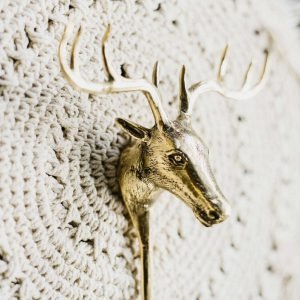Description
LORD KRISHNA ON SERPENT KALINGA
Similar intricately carved wooden carvings were used to decorate Chariots used in temple festivals. Kalinga was a serpent who had started living in the Yamuna river in Vrindavan and had poisoned the entire river thus making it very difficult for the residents and animals of Vrindavan. He was hiding there from Garuda, his eternal enemy. Once Krishna jumped into the river to retrieve a ball, Kalinga immediately tried to kill him. Krishna then grew too big proportions to take control over Kalinga and started dancing on his hood. He spared Kalinga on the behest of Kalinga’s wives and only when Kalinga promised not to harm anyone. Kalinga agreed to go back to his abode as his hood now carried the footmarks of Lord Krishna which would lend Garuda incapable of harming him. This episode is remembered as Kalinga Narthana in South India.
These are usually made of wood and in most cases have exquisite and intricate carvings on multiple set-in panels. The carvings can be images depicting stories from Puranas, deities, mythical animals like Yali, ganas, dancers, real animals, etc. Temple cars or chariots also called as “Rathas” are vehicles used to carry idols of Hindu gods in processions on annual festival days.
Rates from different parts of India vary in style and size. These rates decorated with flowers and jewels are pulled with thick ropes by hundreds of devotees. The Anglo-Indian term “Juggernaut” was inspired by the large temple cars at Jagannath temple, Puri. The chariot at Thiruvarur, Tamil Nadu is said to be the largest – 29 meters tall and weighing over 300 tonnes.
This beautiful piece makes a simple yet stunning statement placed anywhere in your house to give an antique look to your interiors.





Reviews
There are no reviews yet.